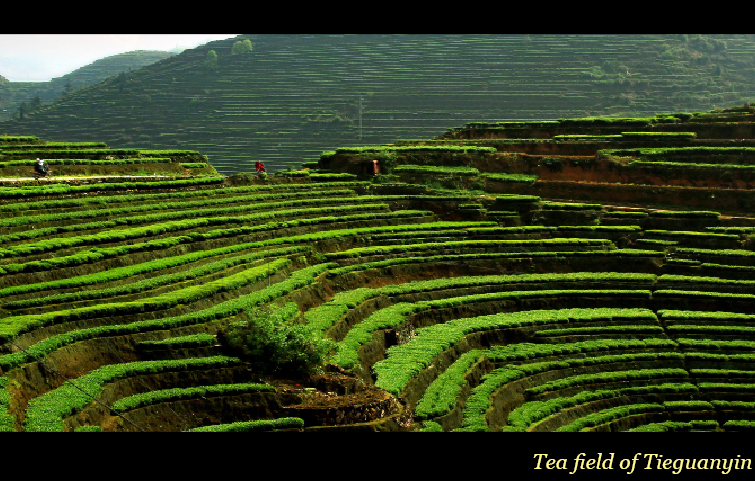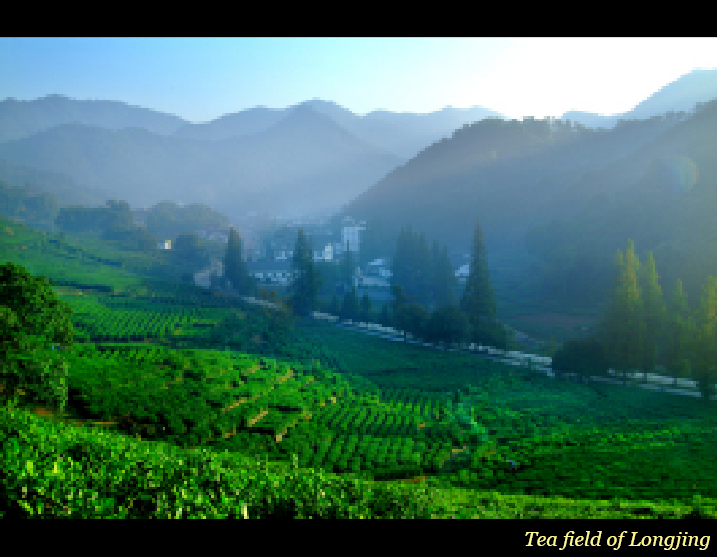CHINESE TEA HISTORY
 China is the homeland of tea, taking a leading position in planting, producing and drinking of tea. The discovery and use of tea has had a history of over four thousand years in China. Since the earliest times of antiquity when fresh tea leaves were boiled in the water as a soup, to latter dried preserved tea in the Tang (618 – 906) and Song (960 – 1279) dynasties, and when the tea culture experienced revolutionary development, ever since tea has played very important role in the Chinese culture, society, medicine, and people’s everyday life.
China is the homeland of tea, taking a leading position in planting, producing and drinking of tea. The discovery and use of tea has had a history of over four thousand years in China. Since the earliest times of antiquity when fresh tea leaves were boiled in the water as a soup, to latter dried preserved tea in the Tang (618 – 906) and Song (960 – 1279) dynasties, and when the tea culture experienced revolutionary development, ever since tea has played very important role in the Chinese culture, society, medicine, and people’s everyday life.
The origins of tea are lost among history and legends. What can be roughly confirmed is that tea originated in the southwest of China. In Yunnan and some other places there are still wild tea trees over thousand years old. It is said that the first man to discover benefits of tea was Shen Nong, the father of agriculture and herbal medicine in China (2737 B.C. to 2697 B.C) (Picture left).
Shen Nong tasted various kinds of plants to find out their features and actions as food or medicine. That is where the famous story of “Shen Nong Tasting A Hundred Plants” come from, when one day after a long day of walking and feeling tired, Shen Nong was thirsty so rested under a tree and started a fire to boil water. Suddenly some tree leaves fell into the water hollowware on the fire. He drank the water and discovered that the water was not only sweet but also refreshing too. He found his exhaustion was all gone so he drank all the water. Discovering potential properties of herbs, he started exploring different plants and tasting them. Over seventy medicinal herbs are accredited to Shen Nong ever since, and recorded in the latter book Shennong Bencao Jing (Herbal Classic of Shennong) which says:
“Tea tastes bitter” Drinking it, one can think quicker, sleep less,
move lighter and see clearer.

Throughout the history, the Tea culture has been developing, expanding, and served differently in the society. In the Zhou dynasty (1046 – 256 B.C) tea leaves were dried to be preserved and cooked as a thick soup for the medical purpose. During the Han dynasty (206 B.C – AD 220), collecting and processing wild tea leaves were improved and tea became more tasteful.
In the Tang (618 – 907AD) it was invented a method called “Steaming Green” to remove the flavour of grass from tea leaves. This was a significant progress in processing tea leaves for drinking, therefore, it is said that
“Tea started in the Tang and flourished in the Song Dynasty”.
The Song dynasty (960 – 1279AD) was a golden age for the tea culture when the business of teahouse was blooming and drinking tea became a pleasure and joy. When the Ming dynasty succeeded, the tea culture reached a renaissance.
Tea is a friend of meditation, keeping the heart immerged in profound tranquillity,
Tea is wings of imagination,
Lifting people above the mundane world while remaining clear minded,
And therefore, keeping people nearer wisdom rather than losing sanity.

Well known familiar dark tea, green tea and oolong tea were all developed during this time. The first emperor of Ming, Zhu Yuanzhang changed roll tea to lose tea and the tradition has been kept ever since. With the better understanding of tea, people were no longer contended with picking wild tea leaves, but opened tea gardens and planted trees. Processing was also further developed and with different processing methods appeared six major types of tea, Green tea, Black tea, Oolong tea, White tea, Yellow tea and Dark tea.








